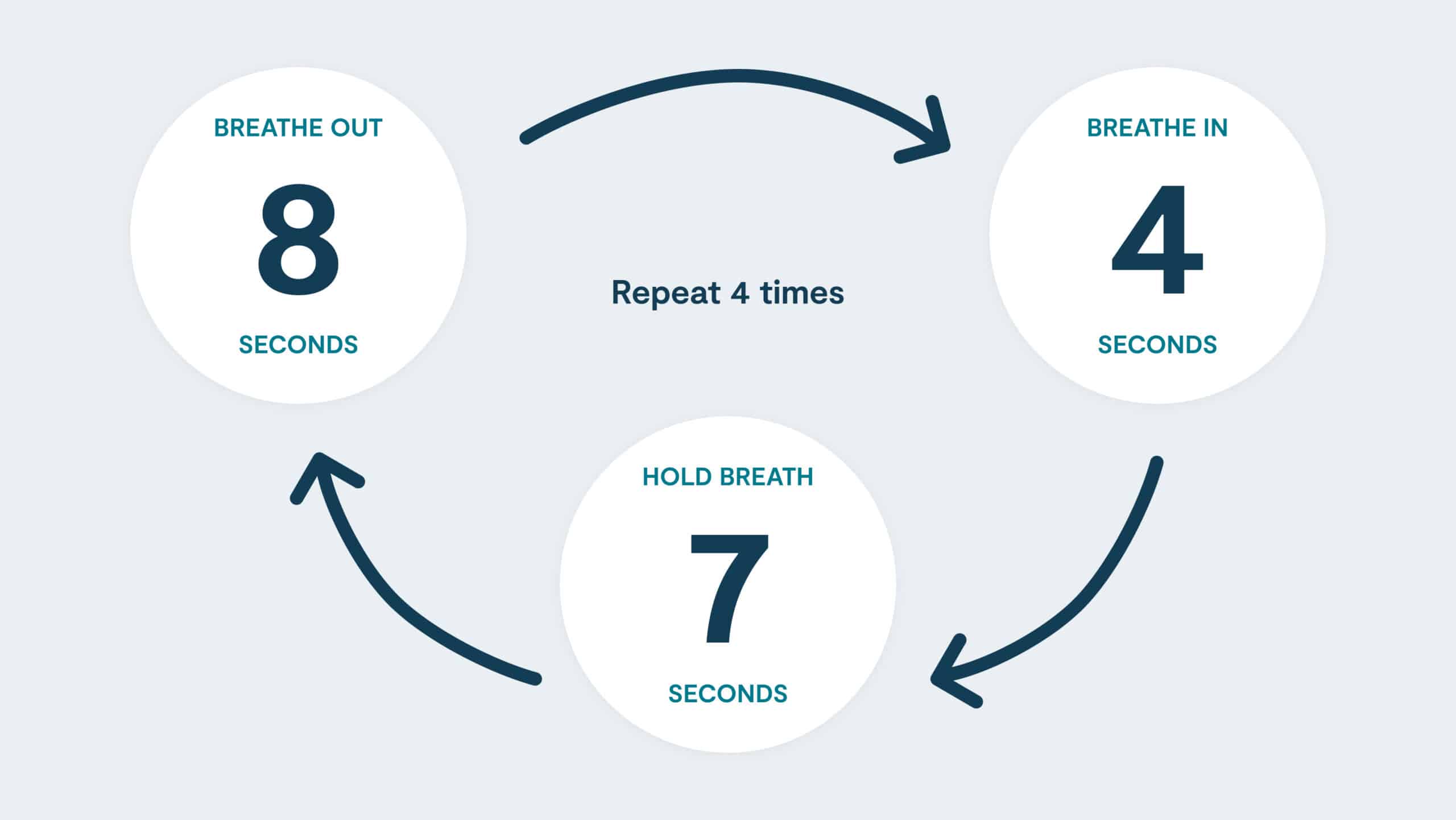
Have you ever tossed and turned at night, staring at your ceiling, unable to rest? Perhaps you’ve replayed an incident over and over in your mind? For people with anxiety, having thoughts that keep them up at night is very common. The good news is that there are ways to reduce these anxious nighttime thoughts and improve sleep quality.
Let’s explore how to get better sleep with tips that can help ease nighttime worries.
What is nighttime anxiety?
Anxiety is a condition often characterized by nervousness, fear, and worry. Experiencing occasional anxiety is a normal part of life. Whether we’re experiencing an anxiety condition or occasional anxiety, these feelings can get in the way when we’re trying to get to sleep. That’s because we typically have fewer distractions before bedtime, so there’s more time to think about the things that upset, annoy, or distress us.
While nighttime anxiety isn’t a mental health condition, it can be a sign of generalized anxiety disorder. Nighttime anxiety can make it difficult to fall and stay asleep, and it can show up in many ways.
Signs and symptoms of nighttime anxiety may include:
- Feelings of nervousness or restlessness
- Difficulty falling asleep or staying asleep or waking up too early
- Restless, unsatisfying sleep
- Worry or fear about current stressors
- Worry or fear about the future
- Thinking over and over about the past
- Trouble breathing
- Racing heart
- Tense muscles and tightness in the chest
- Headaches and stomachaches
- Sweating and feeling lightheaded
Calming our worries: how to get better sleep
Anxious thoughts typically happen automatically, without our conscious choice or effort. When we experience anxious thoughts, our bodies feel it too, which makes it harder for us to sleep. But there are several ways we can calm these thoughts so we can fall asleep and stay asleep, reduce our anxiety, and improve our sleep quality.
-
Pay attention to your self-talk. When you feel worried or distressed about something before bed, identify what unhelpful assumptions may be fueling those upsetting feelings. Gently, and with curiosity, ask yourself these questions:
- What am I thinking right now?
- Is this thought 100% true 100% of the time?
- How have I coped with situations like this before?
- Am I basing my conclusion solely on my emotions?
- Am I looking at the whole picture or just one part of it?
- Come up with alternative, helpful thoughts. Once you’ve recognized your anxious thoughts, think about other possible balanced thoughts. Because it can be difficult to do this when we’re anxious, jot down alternative statements in a notebook that you can revisit.
- Write a to-do list. Thinking about the mountain of tasks you have to finish can be stressful. One study shows that writing a to-do list before bedtime can help a person fall asleep faster. The act of actually writing it down, and not just thinking about it, can help improve how we sleep.
- Put down the coffee and soda. Up to 85% of the U.S. population drinks at least one cup of coffee per day. While there are conflicting studies about whether or not drinking too much caffeine directly causes anxiety, it can worsen symptoms. Opt to avoid caffeine altogether after noon.
-
Try a bedtime breathing exercise. Completing a breathing exercise can reduce activity in our nervous system and promote muscle relaxation. The 4-7-8 breathing technique is aimed to lessen anxiety and help a person fall asleep better. For this exercise, focus on breathing in for four seconds, holding the breath for seven seconds, and exhaling for eight seconds.

It’s important to note that advanced breathing exercises are considered safe for most people although holding your breath isn’t advised for people with certain medical conditions. Check with your medical provider before doing breathing exercises that involve holding your breath.
-
Apply the 333 technique for anxiety. The 333 technique is a common calming exercise used to help relieve anxiety. It helps you concentrate on the environment around you and thus ground yourself in the midst of anxious thoughts. To do this, try to do the following when you’re feeling anxious at night:
- Name three things you currently see.
- Identify three sounds you hear.
- Move or touch three objects.
What if I still can’t figure out how to sleep better?
Nighttime anxiety may continue to show up in your life—and that’s OK. The goal is not to make these feelings go away. The idea is to find solutions that can help you better manage anxiety before bed so that those feelings don’t get in the way of your sleep.
If you’re continuing to have trouble with endless nighttime worries, a mental health expert can help you restore your sleep and find relief from ongoing anxiety.
Learn more tips for sleeping well
Explore our resources and access care for a better night’s rest.
Get started with Lyra todayPrioritize your emotional well‑being.
Join Lyra today

